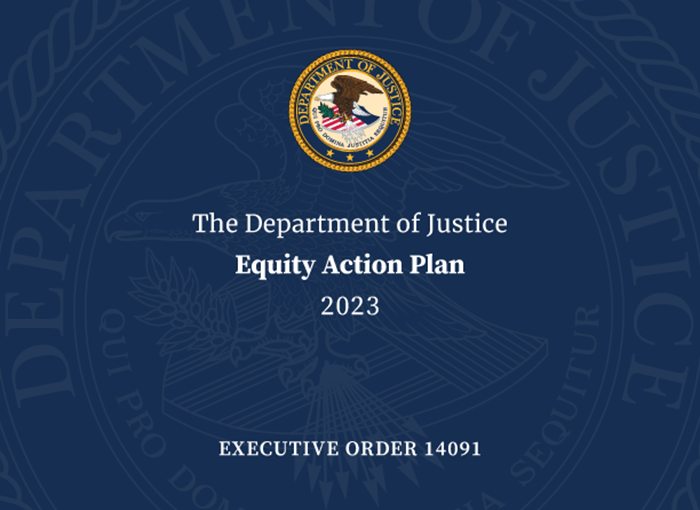
DOJ has taken a Department-wide approach to advancing equity for historically marginalized and underserved communities and will continue to employ a people-centered community engagement strategy to elicit meaningful feedback from the public.
Executive Summary
DOJ has taken a Department-wide approach to advancing equity for historically marginalized and underserved communities and will continue to employ a people-centered community engagement strategy to elicit meaningful feedback from the public.
Specifically, the Department has hosted meetings, convenings, and listening sessions in order to directly engage with communities of color, Indigenous communities, individuals with limited English proficiency (LEP), rural communities, the LGBTQI+ community, persons with disabilities, justice-impacted individuals, and persons otherwise adversely affected by inequality. These communities include national, regional, State, and local organizations that represent the needs and concerns of and/or are rooted in historically marginalized and underserved communities, including those engaged in criminal justice reform efforts.
Historically, these communities have faced barriers in their attempts to engage with Federal agencies, either due to agency practices, policies, systems, and infrastructure, or barriers too often endemic to historically marginalized and underserved communities, such as lack of internet access, transportation, time, capacity, and financial resources. These obstacles have led to lower levels of public familiarity or knowledge of Federal programs, which are often exacerbated by historic or current lack of trust in such programs based on past negative experiences engaging with government partners. In response, the Department will continue to meaningfully engage with these communities to ensure that DOJ’s programs, activities, and equity work are accessible, effective, and impactful.
For Fiscal Year 2024, the Department will advance the following five equity strategies:
- Removing barriers to access to grant funding and resources for organizations led by and that primarily serve historically marginalized and underserved communities that have faced societal and systemic barriers in accessing and receiving Federal resources, as well as to communities disproportionately impacted by crime, violence, and victimization.
- Supporting corrections and reentry programs that seek to reduce recidivism and improve outcomes for justice-involved individuals (including those from historically marginalized and underserved communities and those disproportionately impacted by crime, violence, and victimization), including by improving healthcare coverage and continuity of care supports, reducing barriers to obtaining government-issued identification, addressing burdens associated with inability to pay fines and fees, and improving community supervision models to decrease incidence of revocation for technical violations.
- Promoting an inclusive, diverse, and expert law enforcement workforce to strengthen public trust and improve public safety outcomes by removing barriers to representation within Federal, State, Tribal, local, and territorial law enforcement agencies for underrepresented communities.
- Improving the response of law enforcement and criminal justice personnel to crimes that disproportionately affect women, girls, transgender individuals, and gender non-conforming people (including gender-based violence and sex trafficking) by providing and/or supporting: (1) targeted training on how to investigate and prosecute these crimes; (2) training and resources on trauma-informed and culturally responsive approaches, care, and services available to victims; and (3) resources and support for building relationships with and increasing access to services and assistance for historically marginalized and underserved communities.
- Ensuring that underserved communities (including people with LEP and people with disabilities, among others) are aware of and able to access legal services to address environmental crime, pollution, climate change, and other environmental hazards and have help navigating the legal and regulatory landscape necessary to secure access to clean water, air, and other natural resources.

